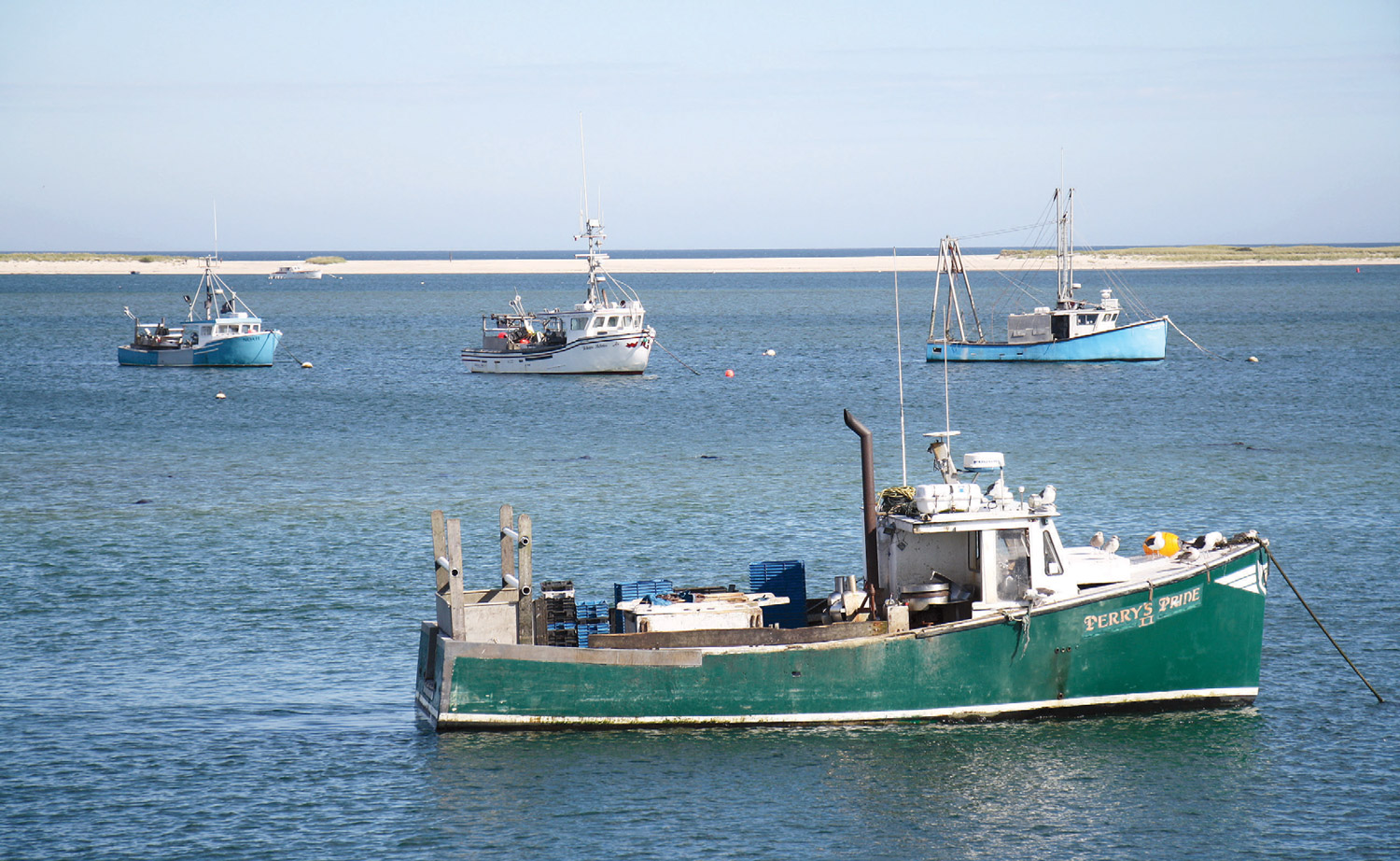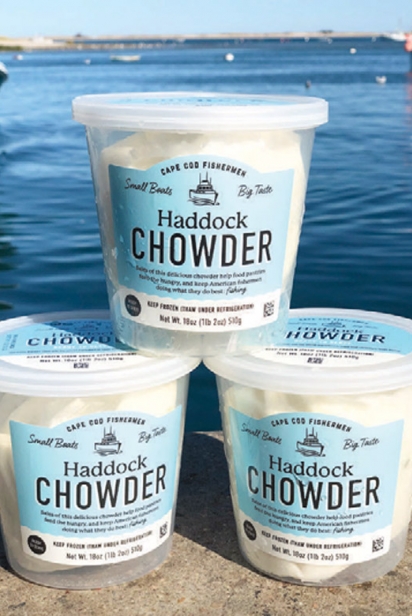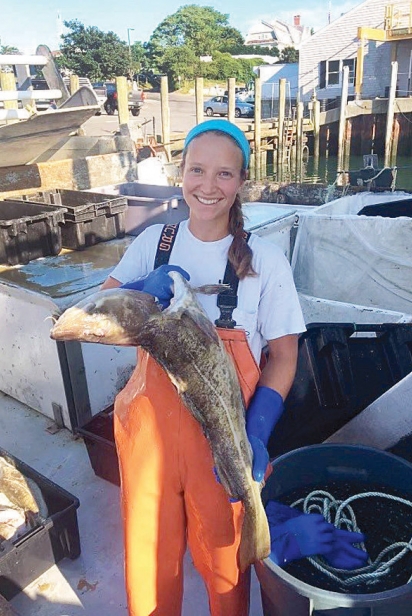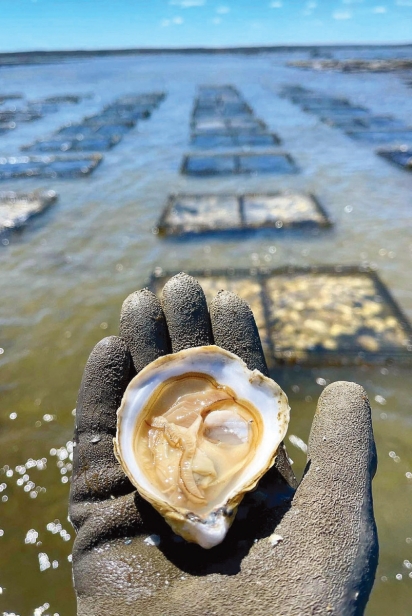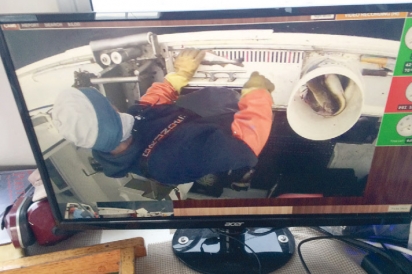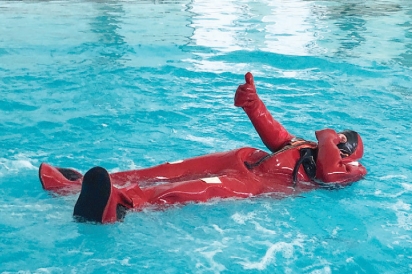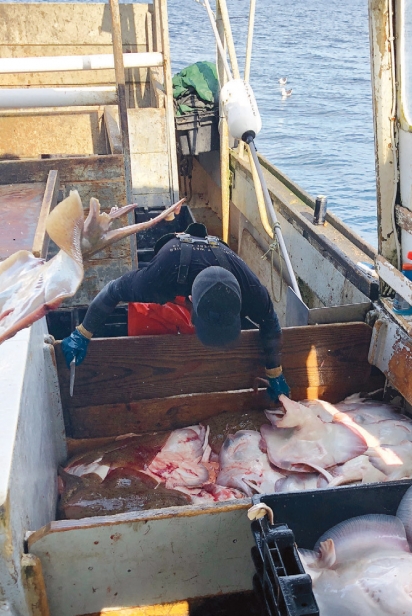Brackish Waters: Cape Cod Commercial Fishermen’s Alliance
Fighting for Local Fishermen and the Environment
The multitude of forces that batter the ranks of Cape Cod’s commercial fishermen can be relentless, but roiling seas and buffeting winds are only the beginning. The headwinds of fisheries management continue to freshen long after these men and women reach the safety of port. But there is a force for workers that has been vigorously working for 30 years to protect and defend this vital industry, those who work within it, and the environment in which they ply their trade: The Cape Cod Commercial Fishermen’s Alliance (CCCFA).
In 1991, a group of local hook and line fishermen gathered to form “The Hook”, The Cape Cod Commercial Hook Fishermen’s Association. This faction felt they weren’t being heard and wanted their own experiences within the hook and line fishery to help better inform governmental officials charged with managing the fisheries. After years of being brushed aside for not having a large enough impact on the fisheries, the organization filed a lawsuit against the federal government. Their concern was that the existing fishing regulations were not doing enough to protect the seafloor environment.
As catches were decreasing in size, fishing gear evolved to be able to reach fishing grounds where the bottom was too undulating for previous gear to work properly. With the new equipment, destructive fishing tactics were smoothing out the complex landscape that acted as a refuge for fish. This quest to maintain fish totals helped to drive down the fish stocks they were more aggressively pursuing. As CCCFA’s Chief Executive Officer John Pappalardo explains, “Beyond catching the fish that were there, they were destroying the environment that allowed the juvenile fish to avoid predation.” After an eleven-year battle, the lawsuit was finally settled in the Hook’s favor. The Hook eventually expanded to include gillnet fishermen, aquaculturists and scallopers, and rebranded itself the Cape Cod Commercial Fishermen’s Alliance in 2013. The original organizers recognized that with a larger membership came more power to fight for their rights and the environment’s protection. This is done by looking ahead and taking stances on issues before they are popular, recognizing challenges and rallying support for a workable solution. “We look out over the horizon to evaluate how we can shape the future with the input of our fishermen clients,” Pappalardo points out. The idea of electronic monitoring is one such topic that has generated much controversy.
Required written reports of catch totals submitted by fishermen to regulators are fraught with errors both unintentional and otherwise. So much so, that scientists don’t put much stock in them when trying to manage the fisheries. When the data began to come in showing the decline of fish populations, daily catch limits and quotas were put into place. Some fishermen, after hitting their daily limit for a particular species, would continue to fish for other species and wastefully throw overboard the type of fish for which they had already reached their limit. To have any chance of getting an accurate count of what condition the fish populations are in, it is vital to have a more precise count of how much fish is being pulled out of the ocean, and not just what is brought to the docks and reported.
In 2006, CCCFA began a pilot program of installing cameras on the working decks of 20 boats. This coming May, mandatory monitoring, in either electronic or human form, will go into effect. The Alliance will fund the expense of the cameras to be installed on board the vessels, so fishermen won’t incur the cost. One can imagine the pushback the Alliance faced from its membership over such a plan. “I don’t even feel the arrows in my back anymore,” Pappalardo laughs There is a simple reason for monitoring, and it’s to glean improved data. “Better data means better decisions,” he explains. CCCFA’s Chief Operating Officer Melissa “Mel” Sanderson, who’s been instrumental in the monitoring program from its inception, points out that one size does not fit all when it comes to monitoring vessels’ catch. “Both the government and the proponents of EM (electronic monitoring) are making a concerted effort to have different types of EM available so that it works for the different types of businesses that exist in New England fisheries,” she explains. There are many who welcome the cameras. Mel explains, “The guys that are doing it right want a level playing field. They want stocks to come back and they follow the rules and it pisses them off that other people aren’t and are getting away with it and preventing the fish from coming back.” The passion of the CCCFA’s mighty staff of eight runs deep in their fight for the Cape’s fishermen. Pappalardo is quick to add, “The ocean is the people’s resource, and it must be looked after and protected.”
Having a presence on national-, regional- and state-level panels and committees continues to protect the smaller outfits when deep-pocketed, large-scale organizations can influence decision making. After a 15-year campaign, an exclusion zone of 12 miles was created from Maine to Connecticut (20 miles off the backside of the Cape and Islands) banning mid-water trawlers that were severely damaging the stocks of Atlantic herring. The herring and other small schooling fish are a food source for larger species, and their protection further bolsters the local commercial fishing industry.
The CCCFA’s staff is buoyed by an active and involved board of directors. Captain Eric Hesse, one of the few remaining bluefin tuna fishermen who use a hand-thrown harpoon, was one of the original board members now back for a second stint. Hesse and many of his fellow board members are fishing alongside Alliance members who have no qualms about airing their concerns. “Oh yeah, people will share their thoughts, no question about that,” he chuckles. This running dialog helps the Alliance to better address the needs and interests of its membership. The challenge of the early days was just getting heard by the controlling boards. Now, the focus has changed in his eyes. “Protecting the codfish, and to bring them back, if they’re able to come back in this climate,” Hesse states. Also, finding new markets for the fishermen’s catch is an ongoing focus. For example, generating interest in the abundant species available, like dogfish, or making connections to locations around the world where it would be enjoyed.
For Hesse, each season brings with it a new target — bluefin tuna in the summer months and haddock in the winter. The spring and fall shoulder seasons find Hesse working with the Northeast Fisheries Science Center in Woods Hole to conduct semi-annual surveys of the groundfish complex. The complex consists of 13 species around the seafloor. Familiar names such as Atlantic cod, haddock, yellow flounder and pollock top the list. Hesse and other hook and line fishermen work with the center to supplement the electronic surveys the center performs to gain more accurate data. “It’s a nice way to break up the year,” the captain admits.
Working to shape policy is only one area of focus for the CCCFA. The Alliance has grown to sharpen their sights on a multitude of fronts affecting fishing families on Cape Cod. Lending financial support for fishermen in the form of the Cape Cod Fisheries Trust allows small boat fishermen to purchase quotas. Quota systems are used to cap the amount of fish boats can catch and protect fish populations. Fishing quotas are commodities and are finite in number. The larger the organization, the more power it has to purchase quotas when they become available, such as when a fisherman retires and sells his quota. Businesses from Gloucester, New Bedford, Point Judith (Rhode Island) and beyond would be just as able to purchase a quota as would a local fisherman. “And once they’re gone, they’re gone. It’s practically impossible to get them back,” Sanderson laments. In 2007, the Fisheries Trust purchased a small scallop quota, and today has invested over four million dollars in purchasing quotas. The quotas are leased to local fishermen at reasonable rates guaranteeing the quotas stay within the local fleet. The Trust leased quotas to 120 fishing families on the Cape for species like scallop, cod, and flounder, which has allowed them to generate an additional three million dollars in seafood annually. The money generated by these Alliance-funded leases not only pays off the debt of the original purchases, but also builds the coffers to procure more quotas when they become available. Since the CCCFA became involved in aiding local fishermen, no quota has left the local fishing industry.
It’s not only the finfish hunters that the Alliance aims to help. CCCFA was the major investor when the original owners and operators of the Cape’s only shellfish hatchery, Aquaculture Research Corporation (A.R.C. Hatchery) were looking to step aside in 2015. A massive renovation was needed on the property. A.R.C. Hatchery’s future is now secure and will continue to support the 1400 shellfishermen and the shellfish programs in towns across the Cape.
Tomorrow’s captains are today’s deckhands, and finding and training the next generation is a new area of focus for the Alliance. Stephanie Sykes, fisherman as well as program and outreach coordinator for the CCCFA, oversees the fisherman’s training program now offered by the Alliance. The first graduating class completed the course days before COVID shutdowns in March of 2020. The program has been bolstered by the passage of the Young Fishermen’s Development Act. Signed into law in January 2021, the act directs the National Sea Grant Office within the National Oceanic and Atmospheric Administration (NOAA) to provide training, education and technical assistance to young fishermen. This act came about due to the lobbying efforts of a collection of small boat fishing groups around the country including many Cape Cod fishermen and Sykes herself.
When the pandemic shutdowns shuttered restaurants, most of the market for fish evaporated for the Cape’s fishing community. The Alliance saw a need on multiple fronts, and devised the haddock chowder program. With the help of a donor, the CCCFA was able to purchase haddock from the boats and turn it into chowder that was then donated to several food banks across Cape Cod and even more around New England. It kept fishermen working on the water and supplied over 70,000 pounds of chowder to those who needed it most by the end of 2020.
Public outreach is another main focus of the CCCFA. Like produce on the shelf, trays of fish on ice in a local fishmonger’s case are the first and only connection to the end consumer before it hits their plate. Far too many don’t stop to think about what went into bringing these filets to the display case. How many hands have prepared it, and how many lives depend on its purchase? Programs like “Meet the Fleet” and the “Pier Host Program” go a long way in educating the public about this essential local industry.
“Meet the Fleet” puts a face and voice to commercial fishing, and teaches attendees about lesser-known known species, like dogfish and scup, that are wonderful alternatives to more popular species and are in great abundance. Fishermen talk of their life on the water, about the benefits of these unfamiliar types of fish, and a local chef prepares tastings featuring the fish to demonstrate the different ways to cook it.
The Chatham Fish Pier, despite its relatively small size, is one of the most visited sites on Cape Cod. The CCCFA has begun a program where retired fishermen field questions from visitors near and far. Hosts explain the types of fish that the small boats are bringing in, the process the fish go through to reach our plates, and strive to answer any question visitors can think up.
All this effort, support and outreach doesn’t come cheap. While a mix of state, federal and private foundation grants make up the lion’s share of revenue, the registered 501(c)(3) organization knows they must get creative when it comes to fundraising. “Pier to Plate” is a collection of recipes from some of the Cape’s finest chefs, with appetizers, stews, chowders and entrees. A signature event on the Cape Cod summer calendar is the Alliance’s “Hookers Ball”. Hundreds gather under the stars each August in Chatham to slurp down jewels from the sea at the raw bar, tuck into a traditional clam bake and bid on special items through a live and silent auction. The twentieth annual event in 2021 was a hybrid in-person/virtual event, where some people picked up their clambakes to go, and it still raised over $150,000.
The areas of concern may shift, but the fight for the local fishermen will continue. With improved information, the question of what’s depleting fish stocks, the fishermen or the environment, will be closer to an answer. “Climate change is real,” Pappalardo says. “We’re seeing species move north from the mid-Atlantic states into our waters.” Permitting will need to change.
Currently, the permits awarded to local fishermen do not cover these incoming species. Regulatory agencies need to be made aware of the ongoing need to shift gears, and be pushed into action. The Cape Cod Commercial Fisherman’s Alliance is the group to do it. As Captain Eric Hesse says, “They are an absolute lifeline for us fishermen.”
For more information on the Cape Cod Commercial Fishermen’s Fishermen’s Alliance, visit their website: capecodfishermen.org
Along with being co-publisher of Edible Cape Cod with his wife Cori, Larry Egan is a New England Associated Press award-winning writer and commentator and host of the talk show The Handyman Hotline on Saturdays from 1-3 pm on 95.1 WXTK-FM. He can be found most afternoons on the trails of Cape Cod trying to wear out their Portuguese Water Dog, Archie. He is still not succeeding.


